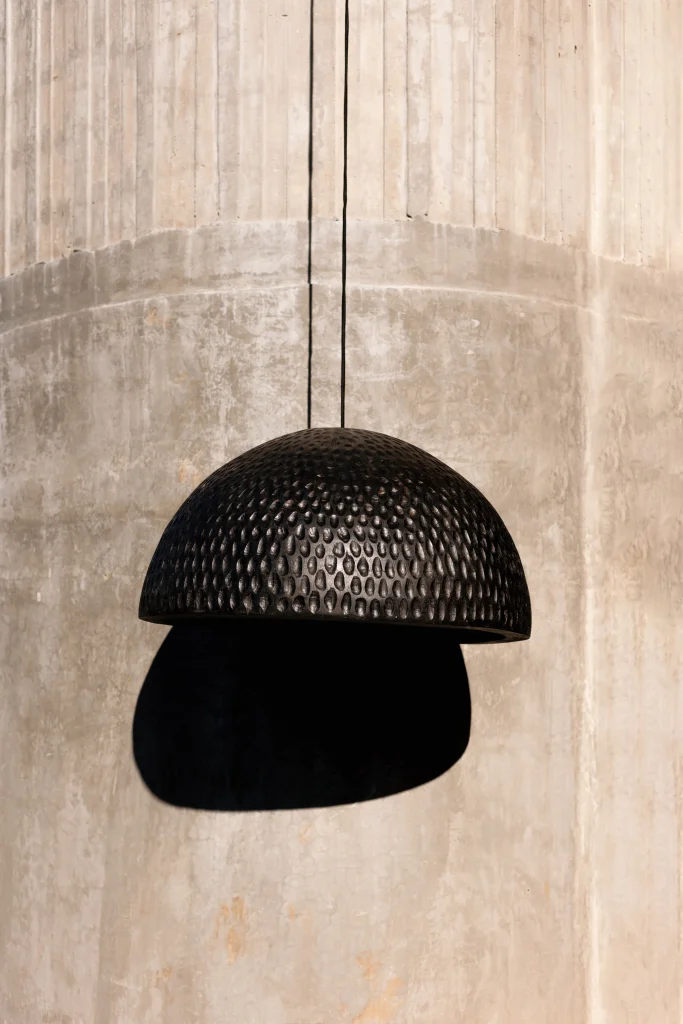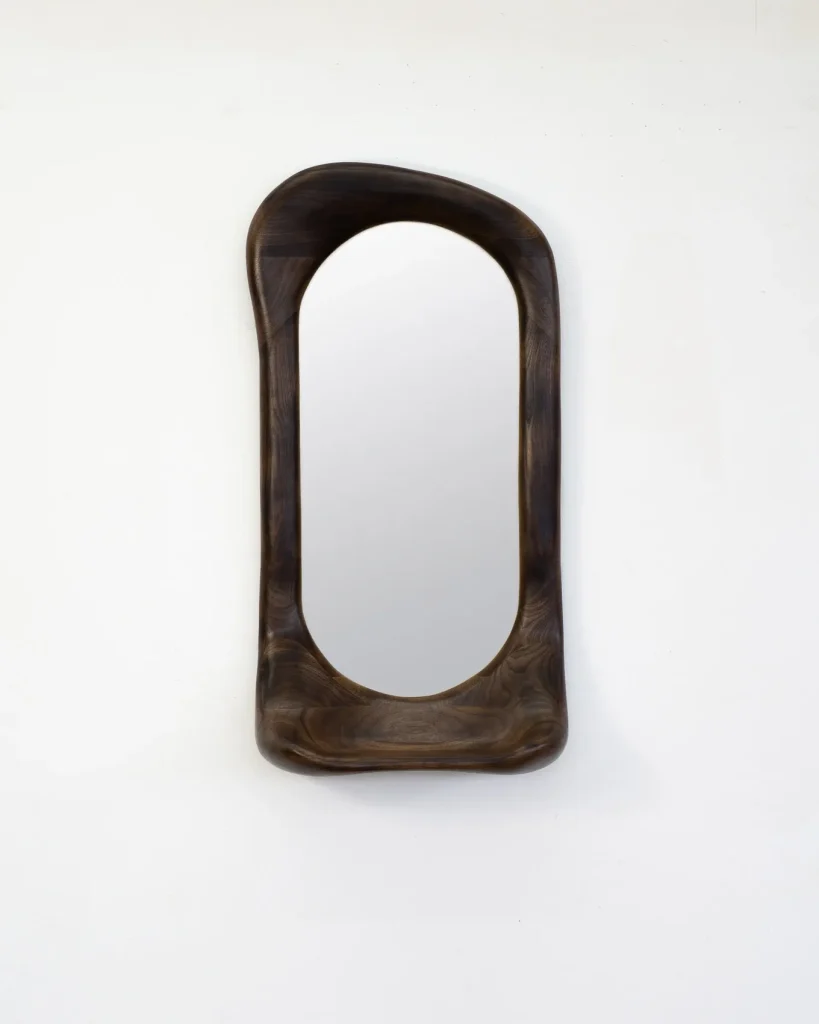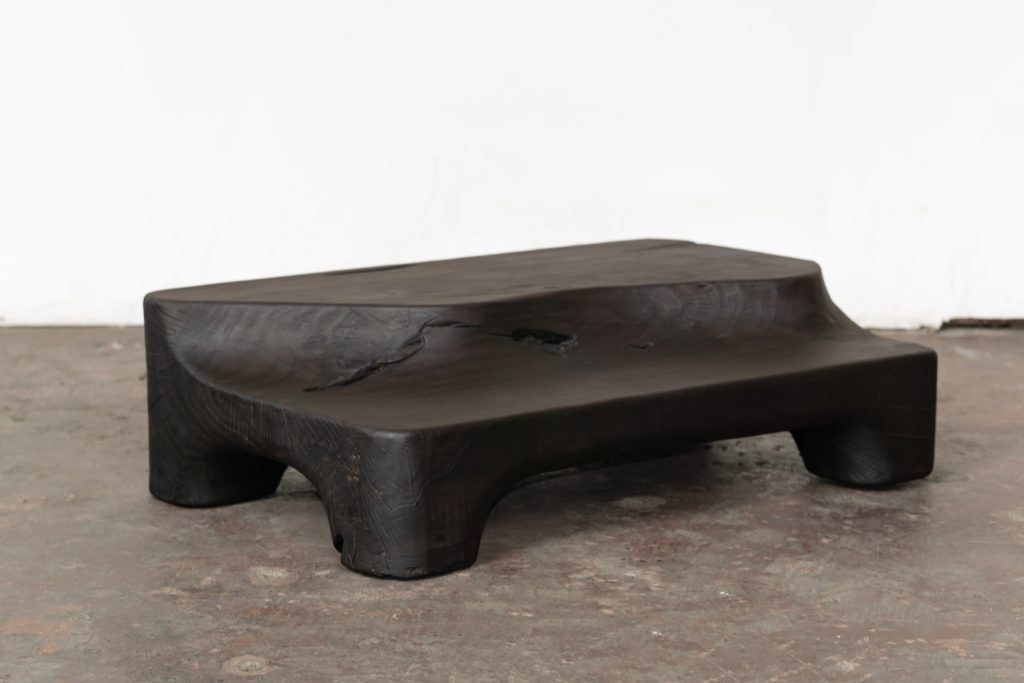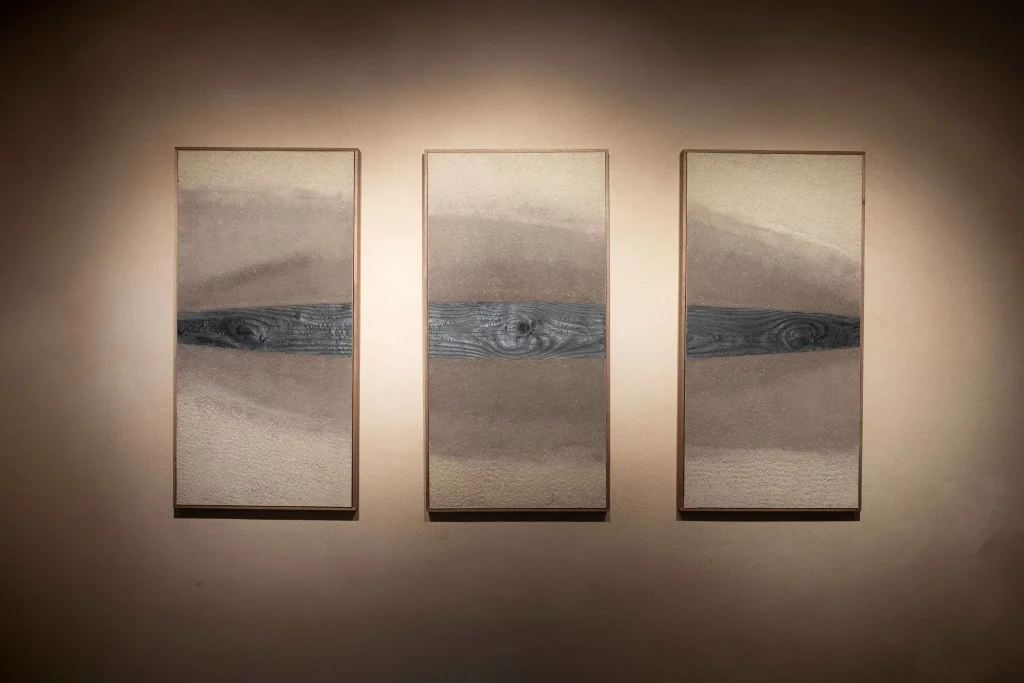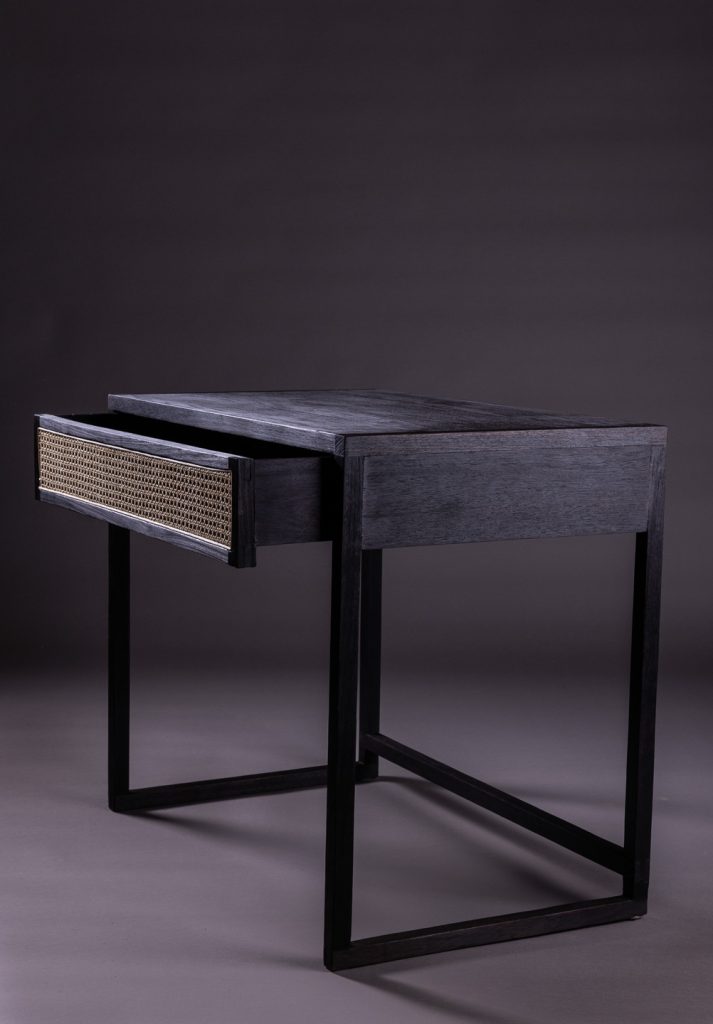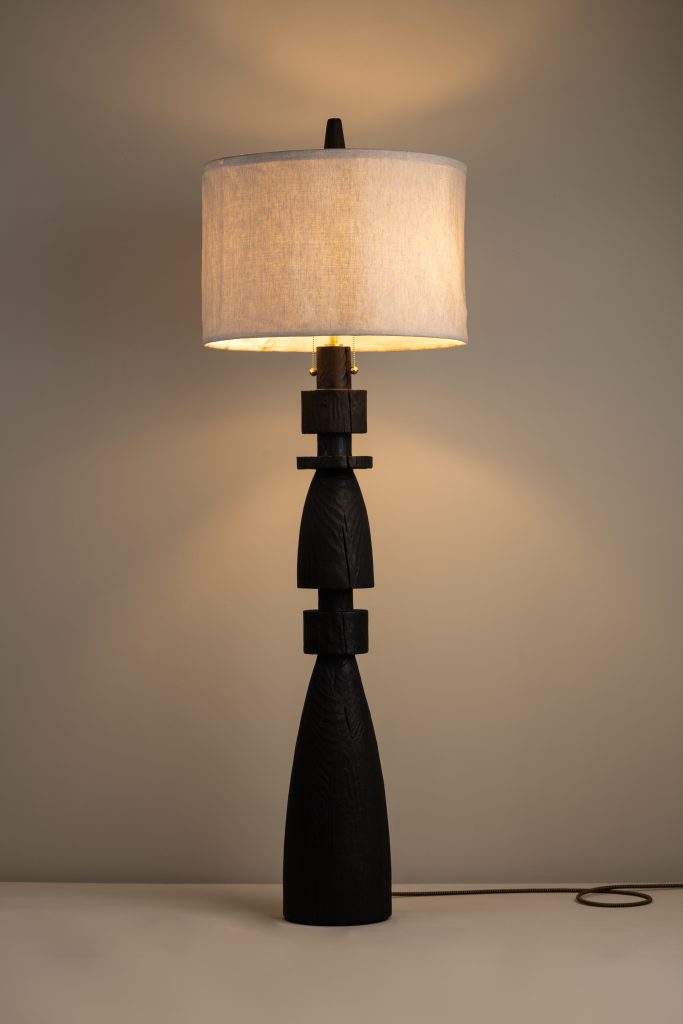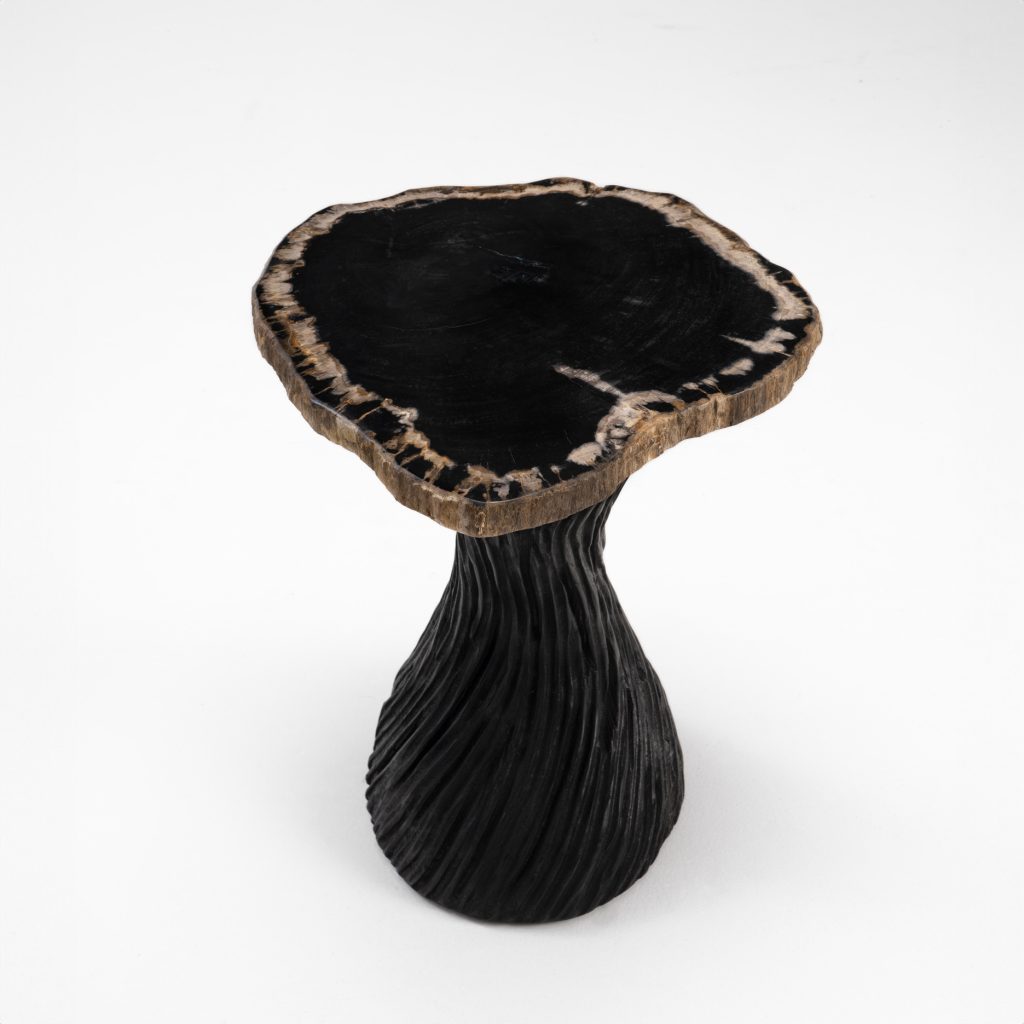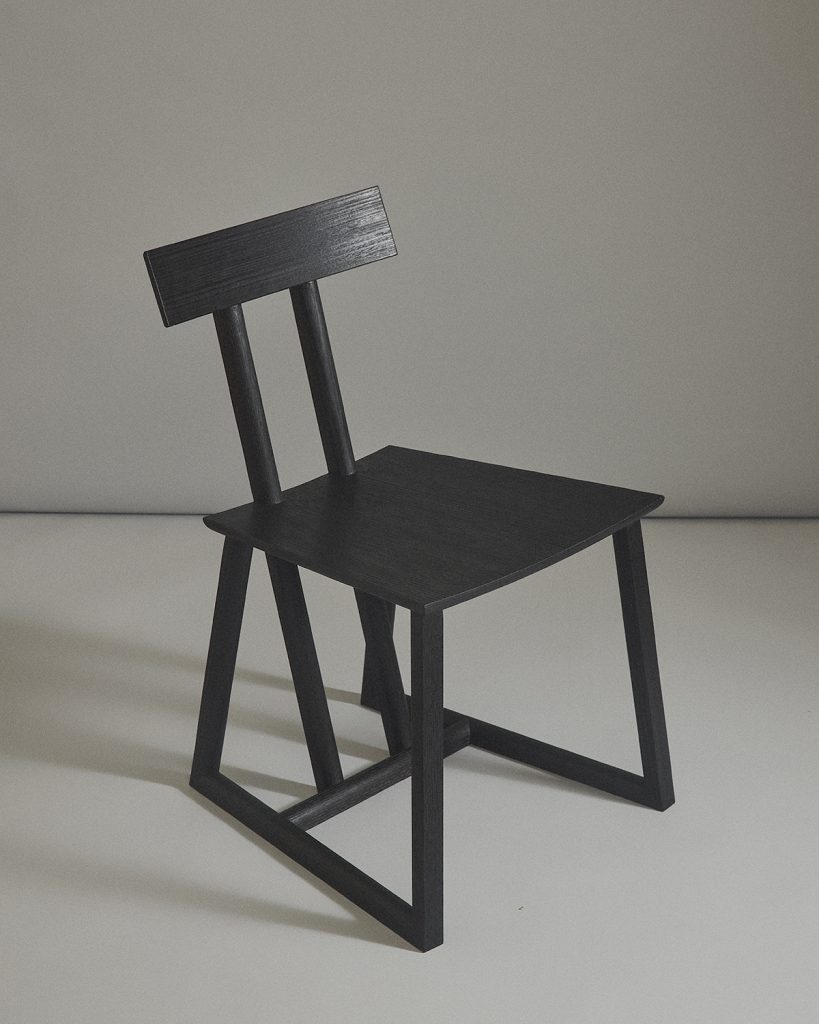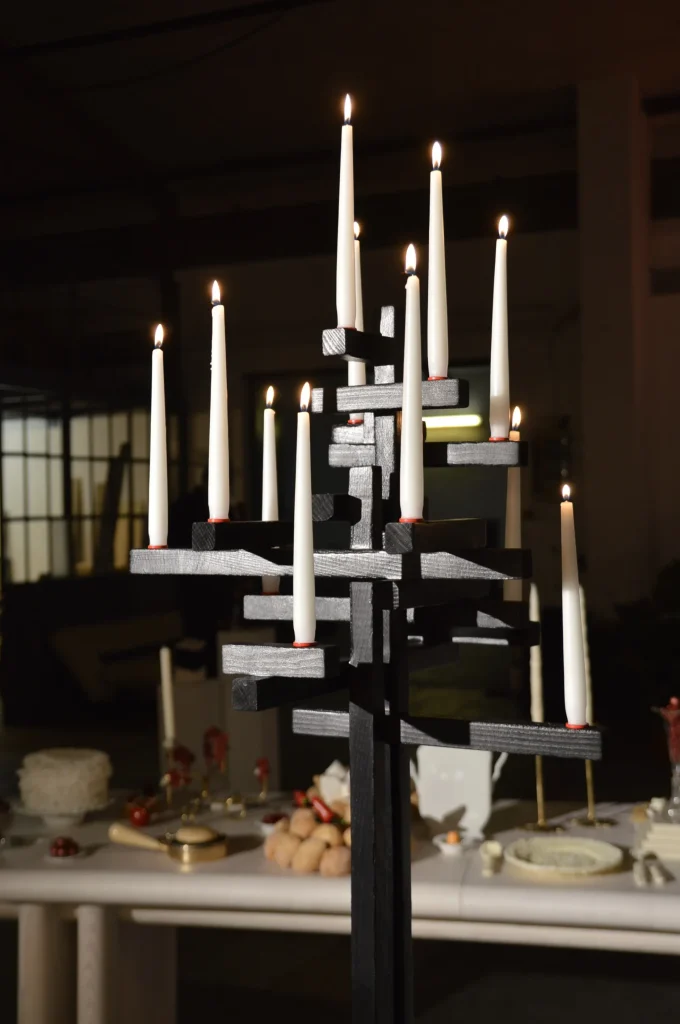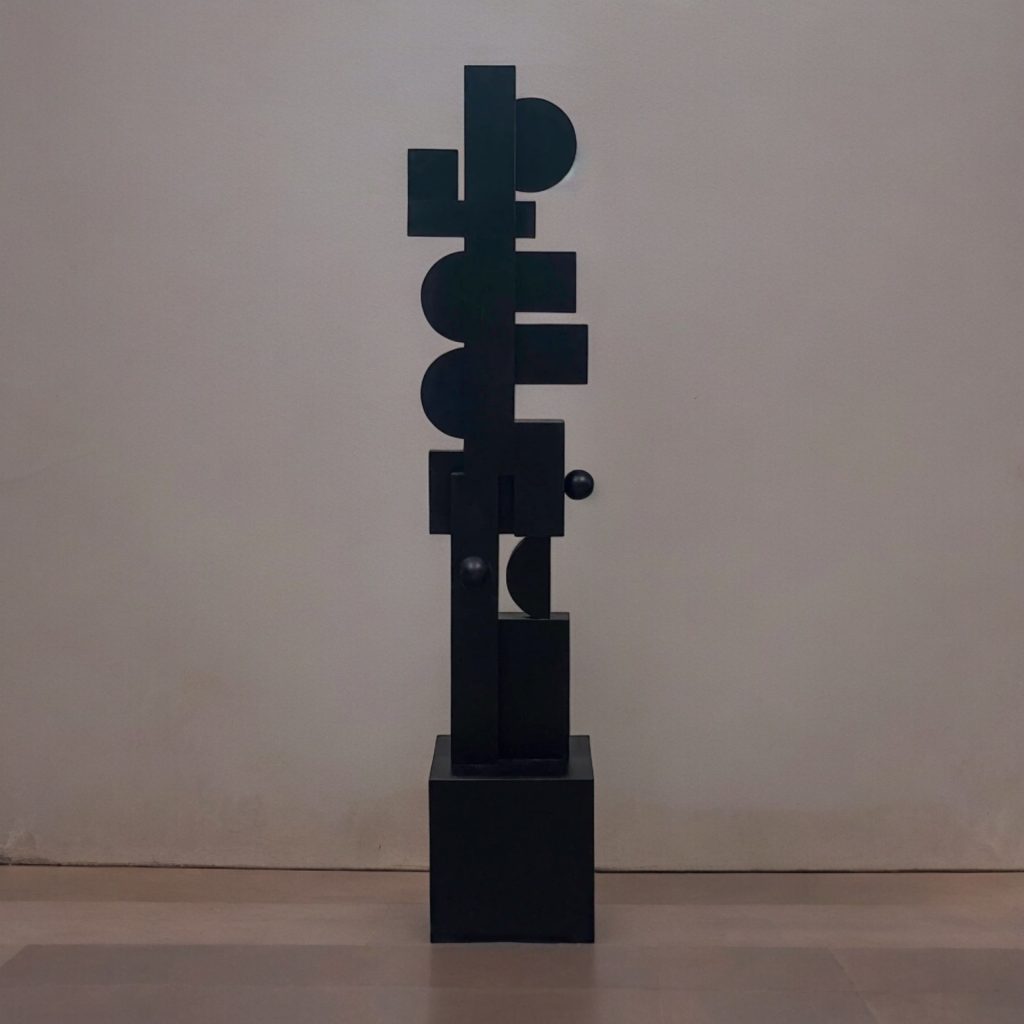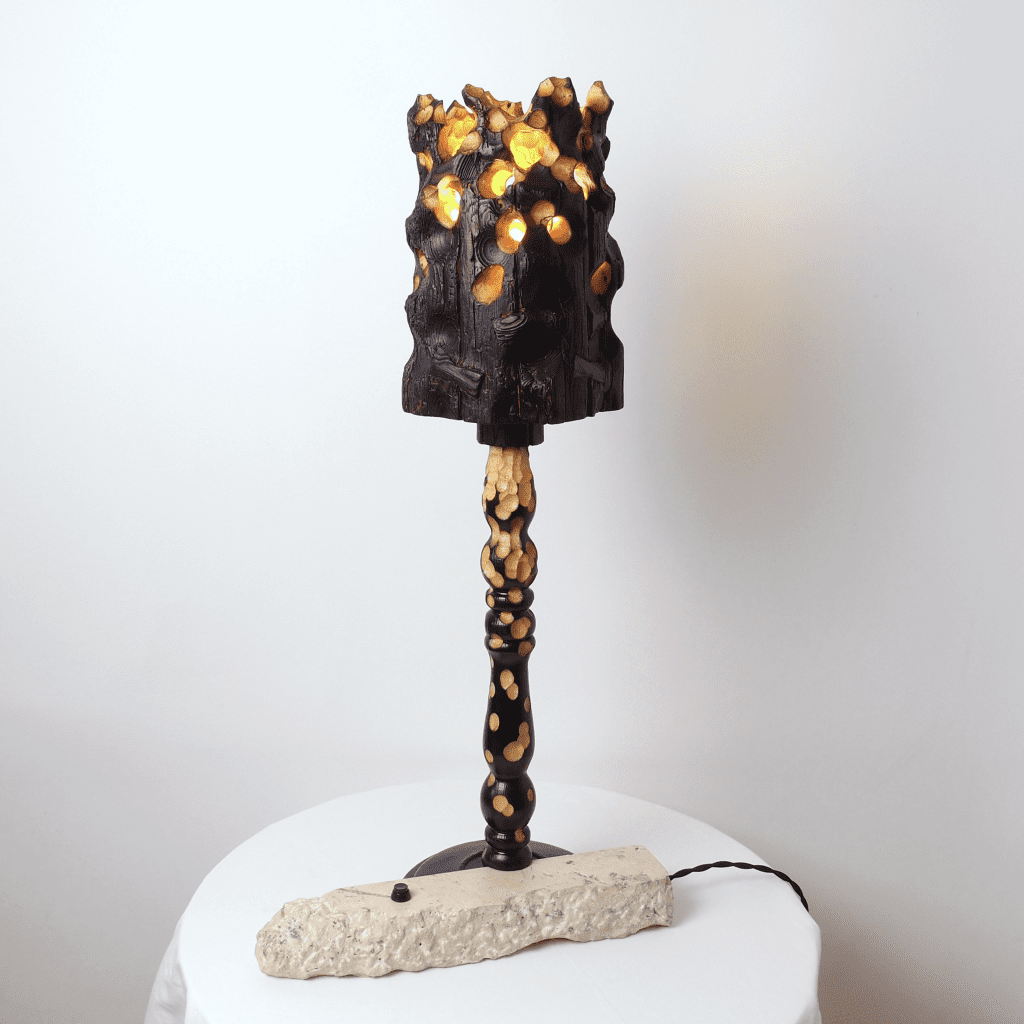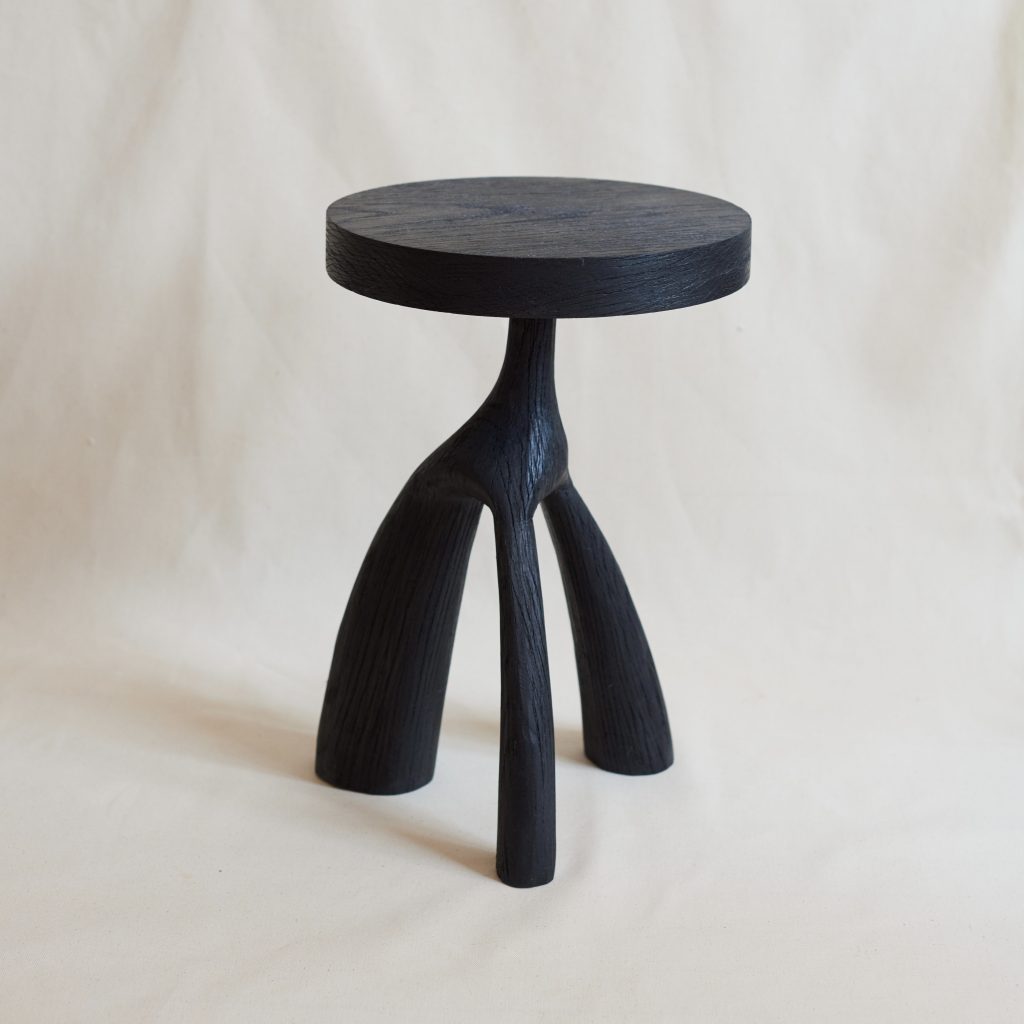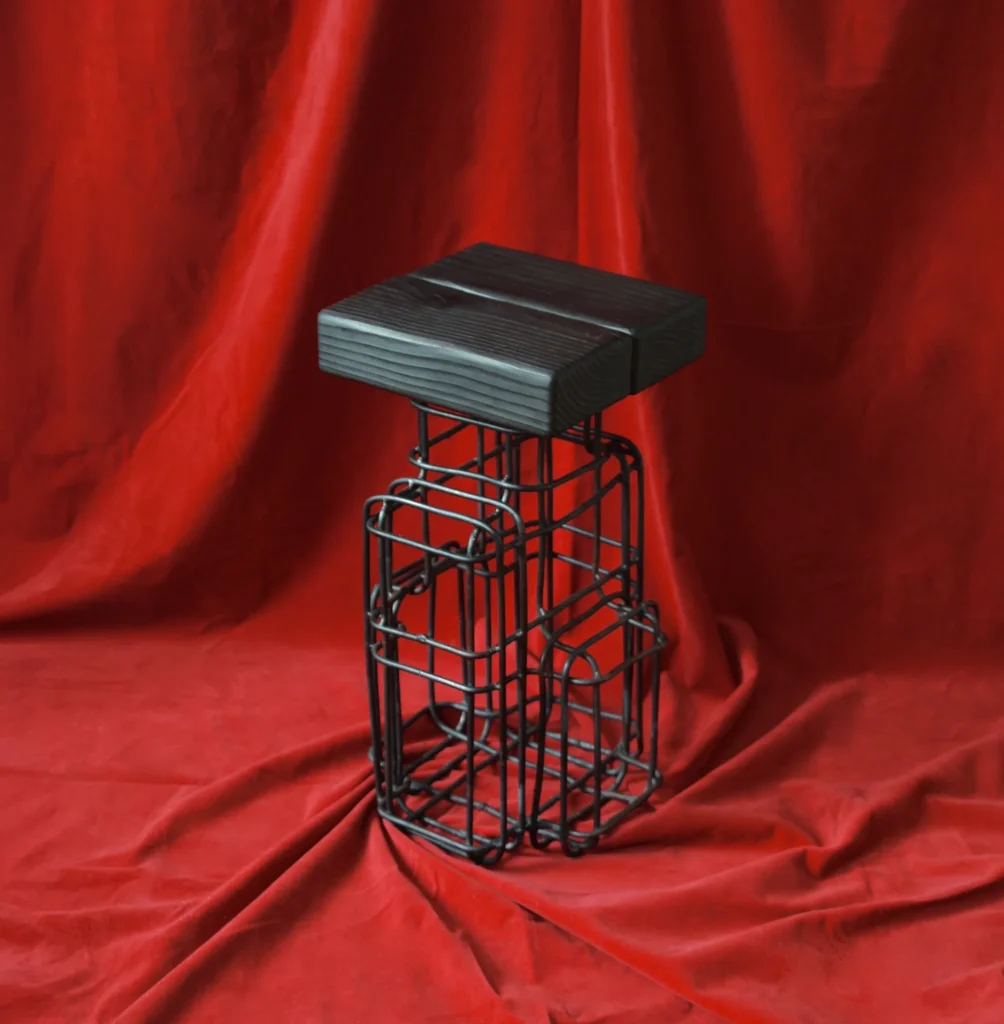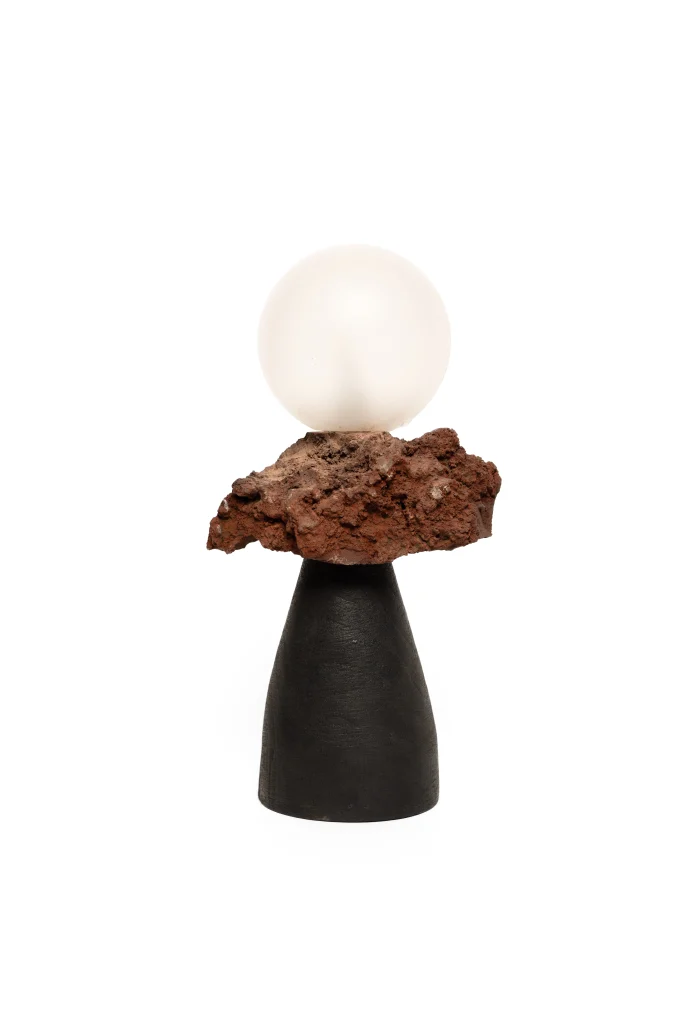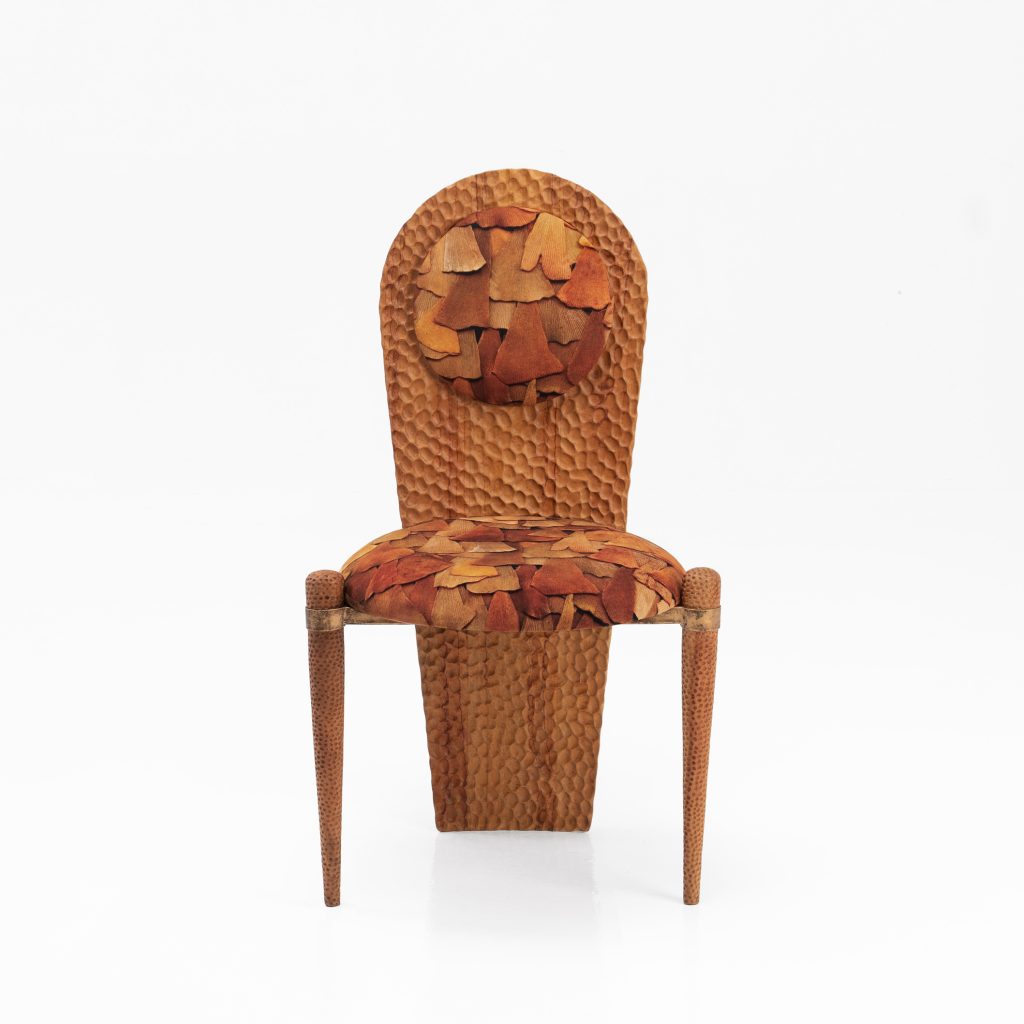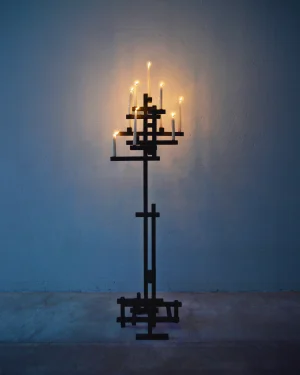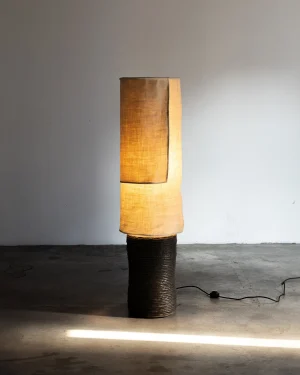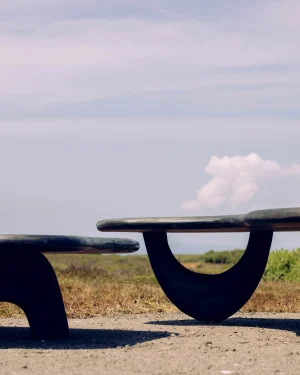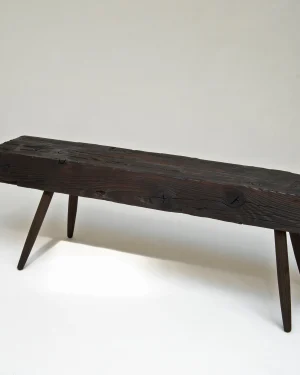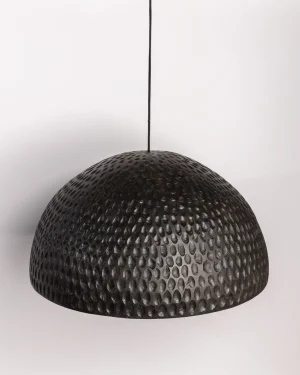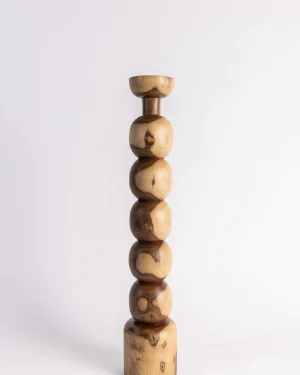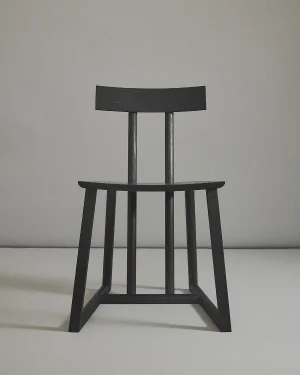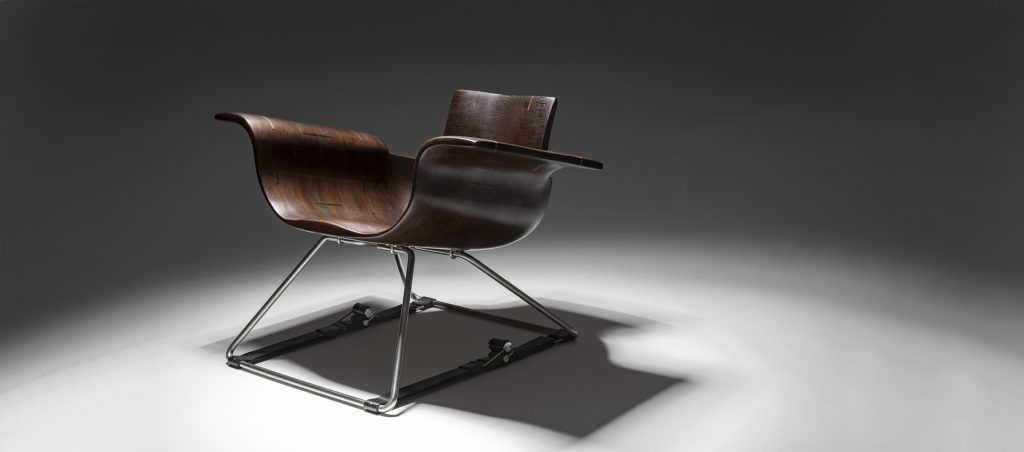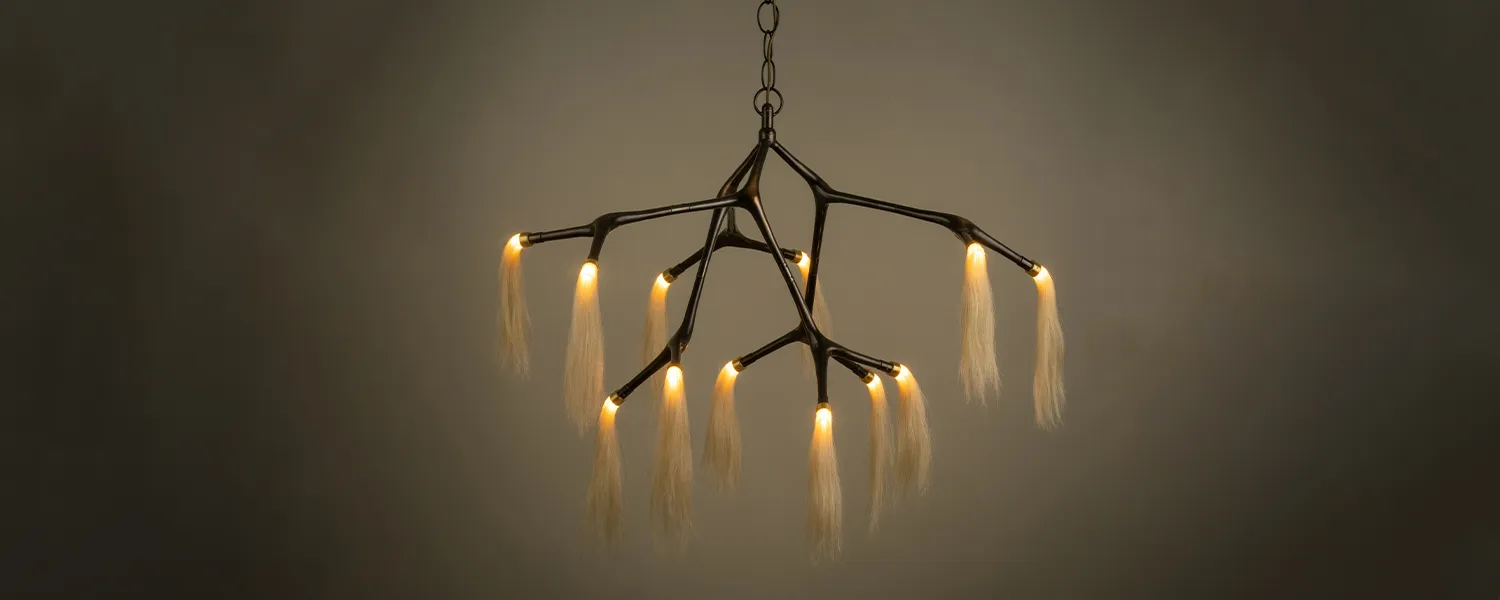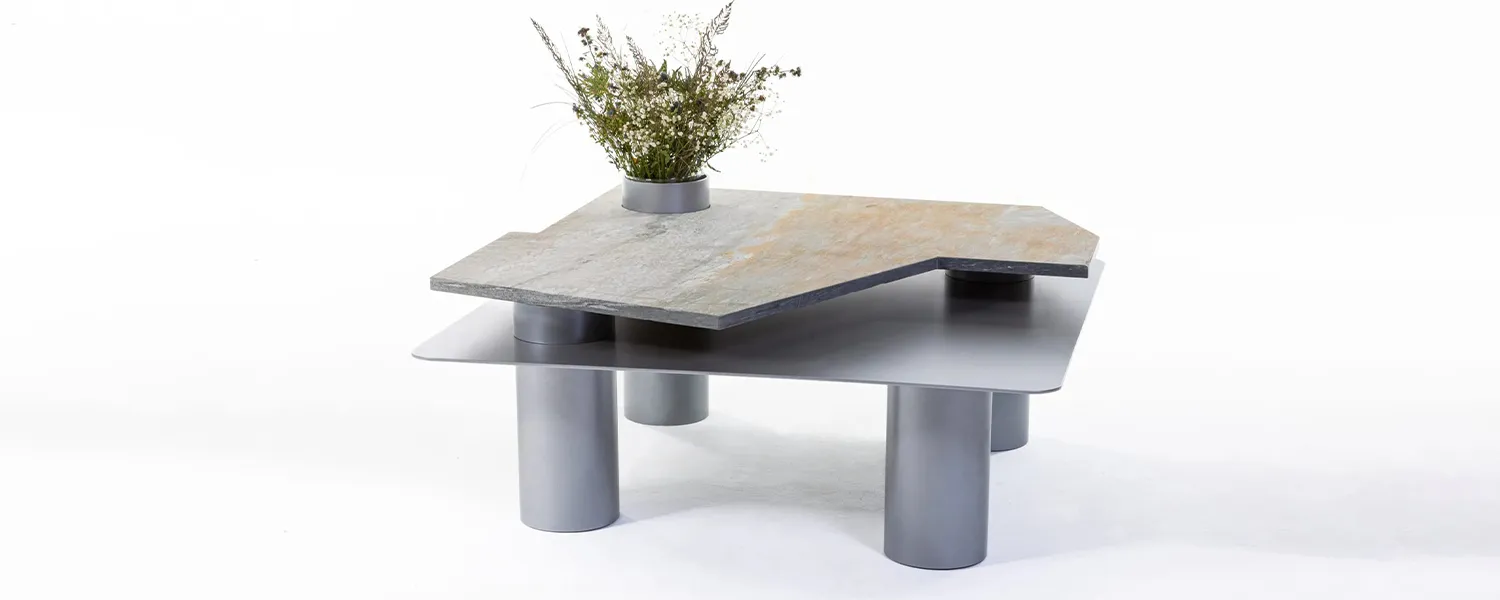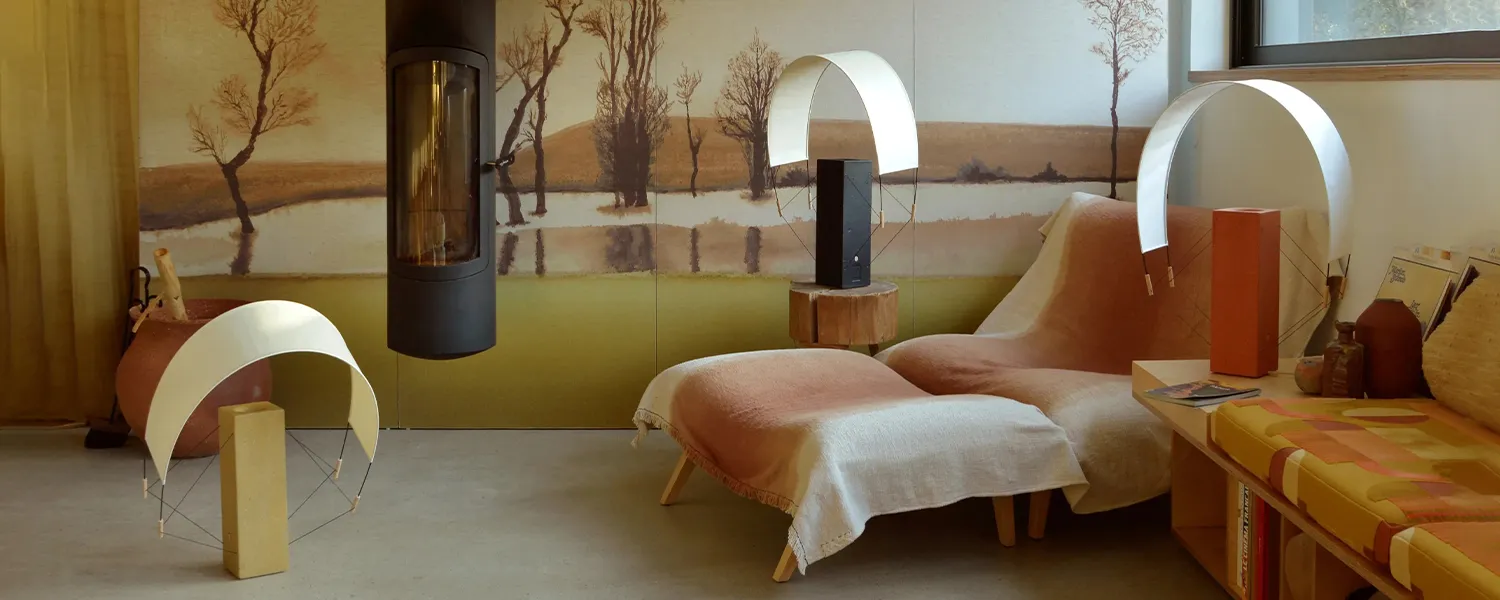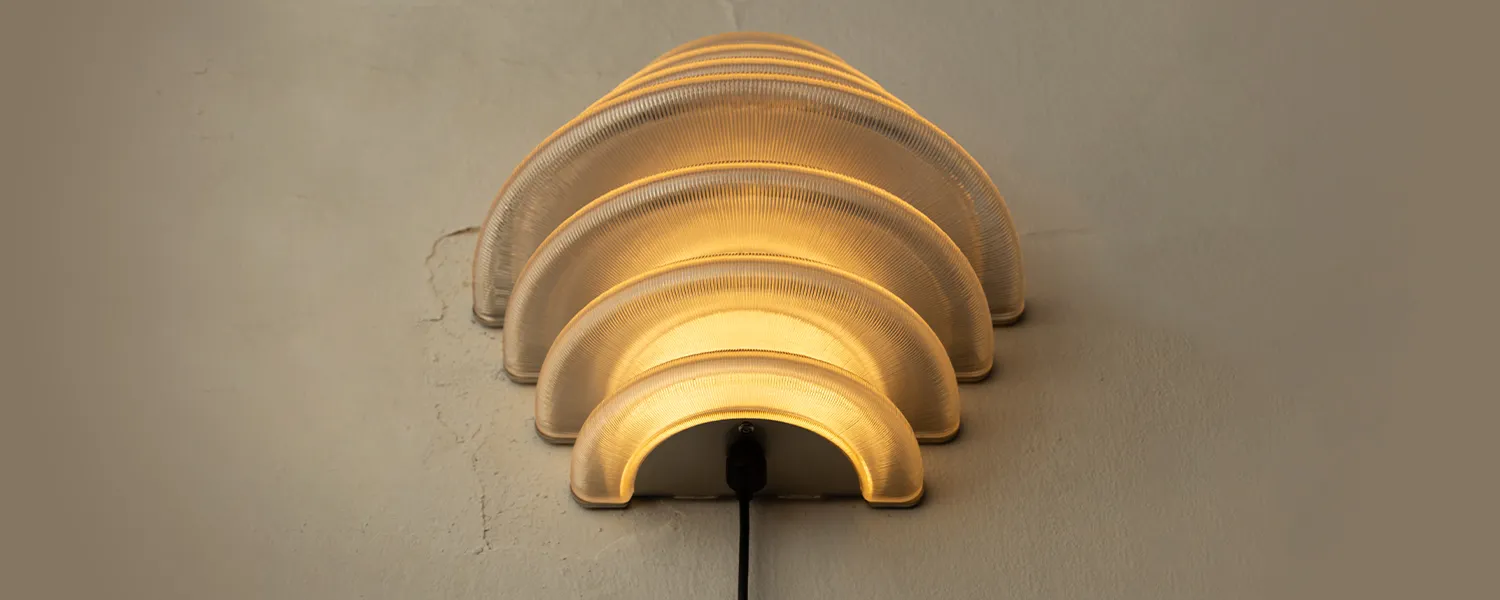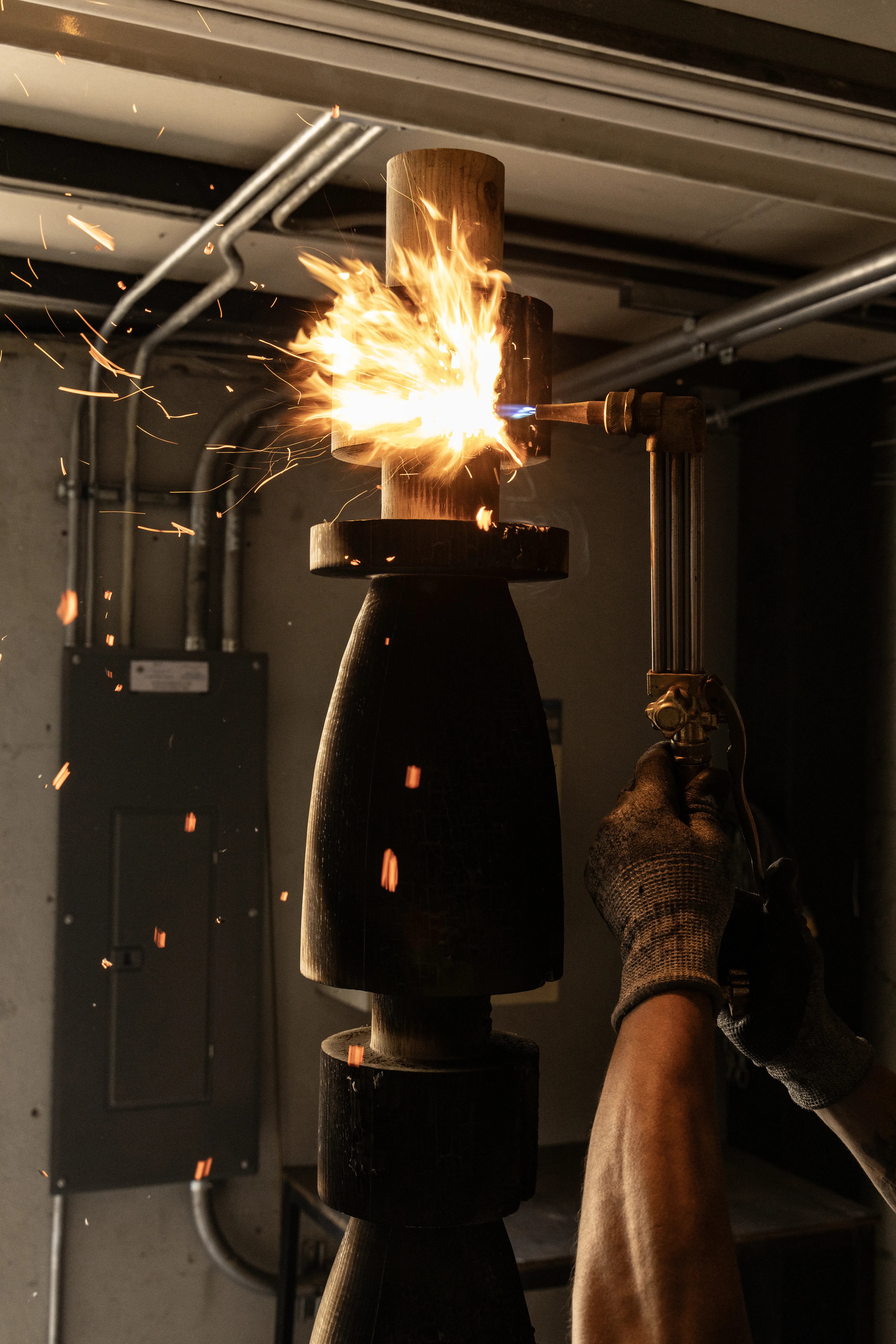
Turning Up the Heat: The Fiery Art of Shou Sugi Ban
Fire transforms. In Japanese culture, flame shifts from destroyer to preserver, most eloquently expressed through shou sugi ban – the art of burning wood to, perhaps counterintuitively, make it last. Literally meaning “burnt cedar board,” this traditional technique shows how a practical act of preservation can become a striking aesthetic statement.
The process calls for precision and an intimate understanding of wood’s nature. Craftsmen char cedar planks with open flames until a carbonized layer forms, then brush the surface clean and seal it with natural oils. This creates a deep black patina, highlights the grain, and gives the wood an irresistible tactile quality. Because each piece reacts differently to flame—depending on grain, burning intensity, and finishing—every creation carries its own character.
Originally developed to protect exterior siding from Japan’s humid climate, shou sugi ban naturally guards against moisture, insects, and decay, while still allowing the wood to breathe. This blend of function and beauty reflects the Japanese approach to design, where practical needs and visual poetry move together.
Read on to discover ADORNO’s selection of shou sugi ban pieces—some honoring tradition, others boldly reimagining this age-old craft for today.
Chema – Pendant Lamp by Daniel Orozco Estudio
Daniel Orozco Estudio’s Chema Lamp applies controlled burning to Mexican parota wood, creating contemporary lighting that honors traditional craft principles. The studio carves each half-sphere from sustainably sourced Yucatán timber, using flame to reveal the wood’s natural character. This technique echoes shou sugi ban while establishing distinctly Mexican material vocabulary.
Charred Walnut Wood Mirror by Alexander Knysch Studio
Alexander Knysch Studio transforms walnut through subtle flame application, creating sculptural mirrors. The studio’s handcrafting process reveals how controlled burning enhances walnut’s natural grain patterns while adding protective qualities. Each piece demonstrates contemporary interpretations of traditional wood-burning techniques, where fire serves both aesthetic and preservation functions.
Tloque – Cedar Coffee Table by OŠ Estudio
ǑS Estudio’s “Tloque” collection engages white cedar through selective burning, creating dialogue between preservation and destruction within Maya cosmological frameworks. The studio positions fire as metaphysical tool, honoring indigenous understanding of wood as living entity.
Shou Sugi Ban Series by Claymoon
Adam Weismann’s Claymoon series employs ancient rammed earth techniques to create meditative forms. The artist encases hand-formed clay within brass and walnut frames, creating dialogue between raw earth materials and refined metalwork. These monolithic pieces invite contemplative engagement, positioning clay as medium for exploring geological time and natural rhythms.
The Square Desk Carbonized by am.o atelier
am.o atelier’s Square Desk bridges Brazilian modernist heritage with Japanese craft traditions, applying shou sugi ban techniques to freijó wood while honoring 1950s design principles. This piece demonstrates how traditional burning techniques can enhance rather than compete with established design vocabularies.
Sswamn – Burnt Wood Stool by Benjamin Foucaud
Benjamin Foucaud’s oak stool uses discarded wood fragments and shou sugi ban techniques to create furniture through chance rather than design. The burning process gives new life to scrap materials assembled without predetermined planning. This approach demonstrates how traditional Japanese wood-burning methods can serve contemporary upcycling practices.
Mezquite Burned Pinewood Floor Lamp by Isabel Moncada
Twisted Fantasy Side Table by Odditi
Reeligio – Wooden Banch by StorqueStudios
This Douglas Fir bench confronts conventional furniture hierarchies, elevating “low-quality” timber through shou sugi ban techniques while invoking sacred architectural traditions. The designer’s choice to burn rejected wood creates powerful commentary on value systems within both material culture and spiritual practice.
Shadow – Tasmanian Oak Dining Chair by Brandon Harrison
Shadow is a dining chair by Brandon Harrison, designed for tactile engagement. The open seat allows for free movement and various sitting positions, while fire has been applied to enhance texture and invite the user’s touch. The chair’s under-structure gives an elegant stance, rising from the ground – from a shadow.
Tetris No. 11 – Burnt Wooden Candle Holder by STUDIO VON SCHOENEBECK
VON SCHOENEBECK’s candle holders use shou sugi ban techniques to explore impermanence through direct material observation. The studio discovered this concept when burnt candles began charring their wooden prototypes, revealing fire’s dual nature. These pieces demonstrate how simple material interactions can yield profound philosophical insights about transience.
Geometrico Wooden Floor Sculpture by Diego Olivero
Diego Olivero Studio’s Geometrico sculpture uses shou sugi ban on Honduran pine, creating geometric forms through collaboration with Sabana Grande artisans. This piece demonstrates how traditional Japanese burning techniques can cross cultural boundaries while honoring local woodworking knowledge.
Ria – Aluminum & Leather Lounge Chair by RIA Design Studio
RIA Design Studio’s RIA II Chair applies shou sugi ban to oak handles, creating dialogue between Brooklyn’s industrial aesthetic and Japanese craft traditions. This piece demonstrates how contemporary designers use traditional burning techniques to express hybrid cultural identities.
Torch Table Lamp by Gábor Góbi
Gábor Góbi’s table lamp applies shou sugi ban to reclaimed wood and limestone, demonstrating how traditional Japanese techniques can serve contemporary sustainability practices. This piece positions fire as tool for material resurrection rather than mere aesthetic treatment.
Tecolli – Oak Wood Side Table by LØRDAG & SØNDAG
Lørdag & Søndag’s Tecolli table bridges Japanese yakisugi and Indigenous Mexican craft traditions through collaboration with master artisan César Zamorano. The Nahuatl name “charcoal” honors pre-Columbian material understanding while demonstrating how burning techniques transcend cultural boundaries.
Fire Walk With Me – Stool A by STUDIO VON SCHOENEBECK
Magdalena and Johannes’ “Fire, Walk With Me” collection transforms personal trauma into creative methodology, burning wooden forms wrapped in metal to create hollow steel structures. This process confronts fire’s dual nature while building upon experimental traditions established by artists like Mona Hatoum and Tuomas Markunpoika.
Hof Tezon Lamp by Daniel Orozco Estudio
Daniel Orozco Studio’s HOF Tezon Lamp combines burnt Yucatán wood with Bajío tezontle stone. This collaboration with House of Forms positions regional Mexican materials within international design contexts.
